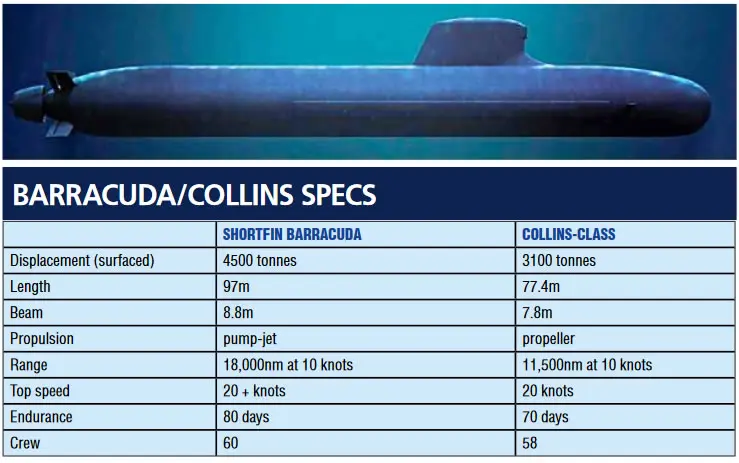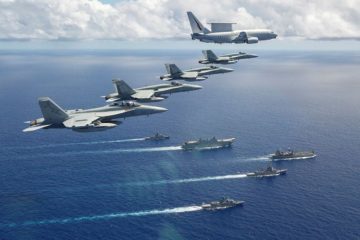This story was updated with statements by Minister for Defence Linda Reynolds
An op-ed published by Australian newspaper The Australian Financial Review on the Attack-class submarine program blames Naval Group for being over budget, late on schedule and for failing in its commitment to spend 60 per cent of the contract value locally. According to Naval Group, such reporting does not reflect facts. The program is actually about to achieve yet another milestone, the System Functional Review (SFR), as planned and on schedule.
Cost increases explained
Following the Strategic Partnering Agreement signed in 2019 and which covers the 2019-2056 timeframe, several specific contracts will be signed as the program progresses. An initial Submarine Design contract was signed for the 2019-2021 period while a follow-on Submarine Design contract was negotiated at the end of 2020 for the 2021-2023 period.
Negotiations took place from September to December 2020 and encompassed new customer requirements that had emerged in the earlier phases. “The budget for the next phase was defined for a particular perimeter. If you add in new demands obviously, this comes at a cost.” a Naval Group source working on the Attack-class program explained.
Another factor which impacted the program cost estimate is that several suppliers submitted higher than expected quotations. “Our initial proposal was turned down, and the Australian government asked Naval Group to submit a new proposal that would be more in line with their allocated budget. As a consequence, Naval Group committed to work on a new, improved offer which will be submitted at the end of February. Contrary to what media reports claimed, our offer was nowhere near 50% above the Australian’s Defense Department budget. This percentage was not accurate at all” our source added. The allocated budget for this phase is reportedly comprised between AUD $2.5 billion and $3 billion.
Naval Group right on target with the program schedule

Naval Group will be achieving the SFR in the coming days, in accordance with the program schedule. The next step will be the Basic Design, which will start in February 2021, as planned, and will be completed by the end of 2023. The detailed design will follow, while the construction of the first-in-class ship is still planned to begin in 2023.
“I can confirm that at the end of January 2021, we will start the SFR, as planned, as scheduled, as announced by Defense Minister Reynolds and Defense Minister Parly. This commitment will be met, despite the ongoing health crisis, despite the 15,000 Km separating Australia and France, despite the travel restrictions…The Attack-class program is right on target and not even a day late”.
Naval Group source working on the Attack-class program
French media inaccurately claimed that Naval Group’s CEO, Pierre Eric Pommelet, rushed to Australia in order to engage in some kind damage control operation following the report by the Australian newspaper. Again, this is not accurate. Pommelet, who declared the program as the main priority for the company when he took office back in March, will be traveling to Australia in February. This trip was planned long ago, to match with the successful SFR milestone and to celebrate the start of the Basic Design phase, which is a major step for the program. “Our CEO doesn’t travel halfway around the world because of some alleged information leaked in the press…” a source familiar with the matter told Naval News.
What about local content ?
In the Strategic Partnering Agreement signed in February 2019, Naval Group signed a contractual commitment which objective is to maximize the Australian content in the program. However, following an initial defamation campaign in the press in early 2020, Naval Group took upon itself the commitment for at least 60 per cent of the contract value to be spent in Australia. This was done in February 2020 in front of a Senate committee.
This commitment which covers the entire program (i.e. all twelve submarines, and the entire duration of the program) has to be inked as part of a new contract in order to become binding and official. An initial contract was submitted by Naval Group in late 2020… but the government has yet to sign this contract.
Meanwhile, the Submarine Construction Yard in Osborne, South Australia, is taking shape, and the number of Australian companies involved in the program is growing steadily with a first AUD$900 million package for the local industry launched in November 2020.
“For the time being, a lot of the design work is taking place in Cherbourg, France, but this was planned since the beginning and this is where Naval Group’s and France’ submarine design expertise come into play. This design phase will last 5 years, which is very marginal compared to the lifetime of the program. As production starts, obviously the share of Australian contract value will grow significantly” our source explained.
To streamline the exchange of information and help with the program, defense ministers of both countries, Florence Parly and Linda Reynolds, started holding quarterly meetings. These meetings are still ongoing and the last one took place in December 2020. The French Directorate General of Armaments (DGA), which belongs to the French Ministry of Armed Forces, is committed to the Attack-class program as well. For example, the DGA bring its technical expertise for the SFR and throughout the design phase of the program.
Update: Statement by Linda Reynolds on 01/25/2021
During a press conference held at Henderson Naval Base on 25 January 2021, Australia’s Defence Minister showed her full support to the Attack-class program:
JOURNALIST: Just on the submarines, is Australia seriously considering ditching its Naval Group contract and replacing the Collins class with an updated version?
LINDA REYNOLDS: Look, I’ve seen those reports, and what I can confirm is that the Future Submarine Program is our nation’s largest and most complex project. We are acquiring the next generation, our future submarines, to replace the Collins class submarine which are still only halfway through their life, so we’ll have the new fleet ready from the 2030s and beyond.
So we are absolutely committed – I’m absolutely committed. I work very carefully and closely with my French counterpart, Minister Florence Parly, and we are both committed to making this project work. And I note today there was a great article that Naval Group Australia is now heading towards 500 Australians working at their headquarters in Adelaide.
So yes, it is a large and complex project, but we are all committed to making this work so that after the Collins we have and we continue to have a regionally superior submarine. Contrary to rumours, it is not over budget and it is not over time.
JOURNALIST: Are you and the Prime Minister frustrated with the cost of the project?
LINDA REYNOLDS: Well, as I’ve just said, it has not – from when we went into contract with Naval Group – it’s not one cent over budget, and I’m working very hard, as are the French, the Government, to make sure that this is delivered on time and on budget.
JOURNALIST: What about deadlines? Are there any failures in meeting early deadlines?
LINDA REYNOLDS: We did have five weeks’ slippage in the design phase early on. Even during COVID, Naval Group have made up some of that time. But again, when you consider this is a multi-decade project, five weeks in the early design phase is, you know, acceptable. But we’re coming up to the next deadline, which is due this month, moving into the next design phase and we are working very hard, as I know Naval Group is, to ensure that they keep meeting their deadlines.
About Australia’s Attack-class Submarine

Construction on the first ship-in-class (the future HMAS Attack) is set to start in 2023 and its delivery should take place in the early 2030ies. The next units will follow with a cadence of one submarine every two years.
For the record, the Australian Government selected Naval Group (then known as DCNS) as its preferred international partner for the design of 12 Future submarines for the Royal Australian Navy on April 26 2016. In the SEA1000 project, DCNS was competing with the Shortfin Barracuda design against Germany’s ThyssenKrupp Marine Systems (TKMS) Type 216 and Japan’s Soryu-class designs. Based on the new Barracuda nuclear-powered attack submarine (SSN) of the French Navy (the first ship has already been delivered), Australia’s Attack-class submarine will be 97 meters in length and 8.8 meters in diameter.
The Attack-class design is based on a conventional version of the Barracuda SSN (Suffren-class) and has a sloped-front sail, bow diving planes, and a pump-jet propulsor (instead of a propeller) with an X-rudder. Lockheed Martin was announced as the Future Submarine Combat System Integrator in September 2016 and the Design Build and Integration Contract was signed 12 January 2018. The Attack-class sensors and processing systems are supposed to be superior in every way to the Collins-class, and will possess the AN/BYG-1 combat system with the armament consisting of eight x 533 mm (21-inch) torpedo tubes with an inventory of 28 torpedoes being Mark 48 MOD 7 heavyweight torpedo, Harpoon anti-ship missiles, or Mk III Stonefish mines.






